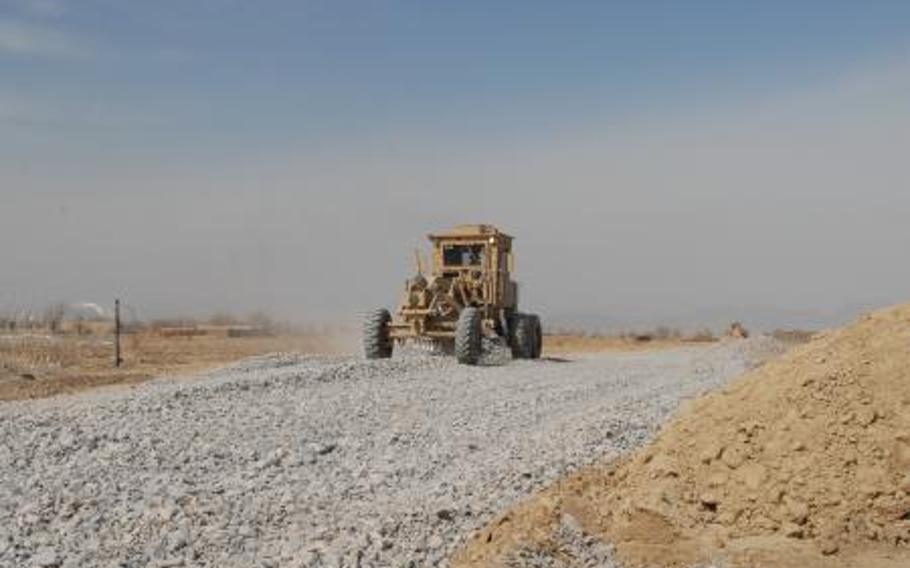Middle East
Bad contracting may have turned deadly in counter-IED program
Stars and Stripes July 23, 2013

In Afghanistan, a road grader spreads gravel in Regional Command-South in February 2012. Poor contract oversight has not only wasted money; in one case, it may have led to the deaths of U.S. troops. (Joseph Koktan/DVIDS)
KABUL — Of all the dangers American troops face in Afghanistan, shoddy contracting is not one for which they have a battle drill.
But poor contract oversight, cited in several reports by the Special Inspector General for Afghanistan Reconstruction, has not only wasted money in Afghanistan; in one case, it may have led to the deaths of U.S. troops, according to the latest report.
The report released on Tuesday detailed fraud and negligence in the installation of grates to block insurgents from placing bombs in culverts running under roads.
“The loss of life because individuals were not doing their job is horrific and unacceptable,” Special Inspector General for Afghanistan John Sopko said in a statement. “This case shows so clearly that fraud can kill in Afghanistan. We will find out if contracting officers did not do their job and if that proves to be true and Americans have died, we will hold those individuals accountable.”
At least two of the Afghan contractors investigated — who had contracts worth nearly $1 million — billed the U.S. government for the installation of 250 such grates that were either never installed or were installed incorrectly.
One Afghan contractor and his sub-contractor have been arrested in connection with the report and charged with negligent homicide and fraud, and investigators are pushing for the arrest of another contractor, the report said.
A spokesman for the NATO-led international military coalition said in a statement that the alliance wasn’t able to comment since it had not been part of the investigation and had received no additional information about it. “We take very seriously any matter involving force protection or the safety of coalition personnel,” the statement said.
Despite advances in armored vehicles and personal body armor, roadside bombs, or improvised explosive devices (IEDs), remain the biggest killer of troops in Afghanistan. The number of bomb attacks has been rising in recent years.
Lack of oversight means the U.S. government still doesn’t know how many of the counter-IED contracts were actually fulfilled, and leaves a dangerous lack of knowledge about what roads have been grated and which ones are still vulnerable to culvert bomb emplacement, according to the report.
“There is insufficient evidence to show that culvert denial systems paid for with U.S. government funds were ever installed or, if they were, that the systems were installed properly,” it said.
The inspector general was unable to quantify exactly how much the U.S. government has spent on so-called culvert denial projects but found at least $32 million in related contracts, according the report.
Among the recommendations included in the report are that documentation of the work be reviewed by technical experts to ensure quality control; that checks are made to ensure the required culvert work has been done before contractors are paid; and that the locations of grates are recorded after they are installed.
druzin.heath@stripes.com Twitter: @Druzin_Stripes